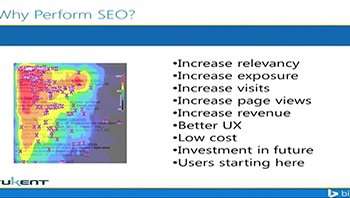Regardless of what type of online advertising campaign you plan on putting together for a website, the basics of SEO must be respected and implemented. Pay Per Click, Social Media, Advanced SEO…none of these can truly succeed without a proper foundation.
While the nuances of how best to implement SEO strategies and techniques will never truly be set in stone, most SEO experts will agree that there are some basic fundamentals essential to any website’s success. If you’re interested in increasing the relevancy of a site, its exposure, the amount of traffic and page views, and/or the amount of revenue generated by the site (and we should probably be interested in improving all of these) then the following basic pillars of SEO are a great place to start
The 6 Major SEO Areas
According to SEO expert Duane Forrester of Bing, there are 6 major SEO areas to keep in mind when getting started:
- Crawlability
- Site Structure
- On Page
- Content
- Links
- Social
Crawlability refers to your how easy it is for search engine web crawlers to navigate your site and understand the content of each page. Site structure refers to the way your website is built and how easy it is to navigate the site and find things. In other words, how your website is organized.
On Page has to do with proper titles and tags for pages and content. Efficient use and placement of keywords on a page and within your content also fall into this category. Content is the actual substance and subject matter of your website, a site’s raison d’être so to speak. Content must be updated regularly and kept relevant to continue attracting people back to your site.
The Links we’re concerned about here are links from the outside leading in to pages on your site. A powerful link-building strategy will help maintain and increase traffic to a site. And finally Social, your social media strategy has a huge effect on building your community and nurturing interest in the content of your website.
There are several websites and platforms available that provide more in depth information on each of these categories, such as Moz or Lynda. The more you learn about these topics, the more you can implement them into to your website’s structure and content strategy, and the more likely you are to achieve the goals of your website.






